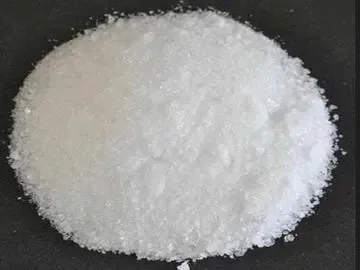Diammonium phosphate (DAP) is a water-soluble ammonium phosphate compound that provides both nitrogen and phosphorus, two of the most essential nutrients in biological and industrial systems. It plays a crucial role in fertilizer production, food technology, and chemical manufacturing across global industries.
Diammonium phosphate (DAP) is an inorganic salt with the chemical formula (NH₄)₂HPO₄. It is formed by the neutralization of ammonia and phosphoric acid, producing a white crystalline material that dissolves easily in water. DAP supplies 18% nitrogen (N) and 46% phosphorus pentoxide (P₂O₅), making it one of the world’s most efficient phosphate fertilizers. Beyond agriculture, DAP is also used in food processing, yeast fermentation, fire retardants, and industrial water treatment.
From improving soil productivity to supporting biotechnology and sustainable manufacturing, diammonium phosphate connects chemistry with practical innovation.
What Is Diammonium Phosphate Chemically?
Chemically, DAP consists of ammonium ions (NH₄⁺) and hydrogen phosphate ions (HPO₄²⁻).
Its molecular formula is (NH₄)₂HPO₄, with a molecular weight of 132.06 g/mol.
It appears as a white granular or crystalline powder, odorless and slightly alkaline in solution (pH 7.5–8).
DAP is non-combustible, highly soluble in water, and stable under normal storage conditions, making it suitable for bulk industrial applications.
How Is Diammonium Phosphate Produced?
DAP is produced by reacting ammonia (NH₃) with phosphoric acid (H₃PO₄) under controlled conditions.
The reaction is:
[ 2NH₃ + H₃PO₄ → (NH₄)₂HPO₄ ]
After neutralization, the solution undergoes crystallization and drying to obtain fertilizer-grade or food-grade DAP.
This process ensures high purity, consistent nutrient composition, and excellent solubility, suitable for agriculture, food, and chemical industries.
What Is Diammonium Phosphate Used For?
- Agriculture: DAP is the world’s leading phosphate fertilizer (18-46-0), supplying crops with essential nitrogen and phosphorus. It promotes root development, seed formation, and higher yields.
- Food Industry: Used as a yeast nutrient, leavening agent, and pH buffer in bakery, wine, and beverage production.
- Biotechnology: Acts as a phosphorus and nitrogen source in microbial fermentation and enzyme manufacturing.
- Industrial Applications: Serves as a fire retardant, ceramic additives, metal treatment chemicals, and water softeners.
DAP vs MAP (Monoammonium Phosphate)
While both DAP and MAP are ammonium phosphate fertilizers, they differ in composition and soil performance:
- DAP (NH₄)₂HPO₄: Higher nitrogen content and slightly alkaline reaction; ideal for neutral or alkaline soils.
- MAP (NH₄H₂PO₄): More acidic, suitable for low-pH soils and phosphorus-sensitive crops.
Together, DAP and MAP provide versatile phosphorus solutions for global agriculture.
Is Diammonium Phosphate Safe?
Yes. DAP is classified as Generally Recognized as Safe (GRAS) by the U.S. FDA and approved by EFSA for use in food and feed applications.
It is non-toxic, non-flammable, and environmentally stable.
However, overuse of fertilizers can lead to nutrient runoff and eutrophication, so precision application and sustainability practices are essential.
Industrial and Environmental Importance
Beyond its nutrient role, DAP supports sustainable agriculture and green chemistry.
Phosphate recovery technologies allow DAP to be recycled from wastewater and industrial by-products, reducing dependency on phosphate rock mining.
Its role in closed-loop nutrient management aligns with circular economy principles and global sustainability goals.
Summary
Diammonium phosphate (DAP) is a versatile and efficient phosphate compound combining nitrogen and phosphorus in one soluble form.
Its high nutrient content, stability, and multifunctional use make it indispensable in fertilizers, food production, and industrial chemistry, powering sustainable growth across agriculture, biotechnology, and materials science.

